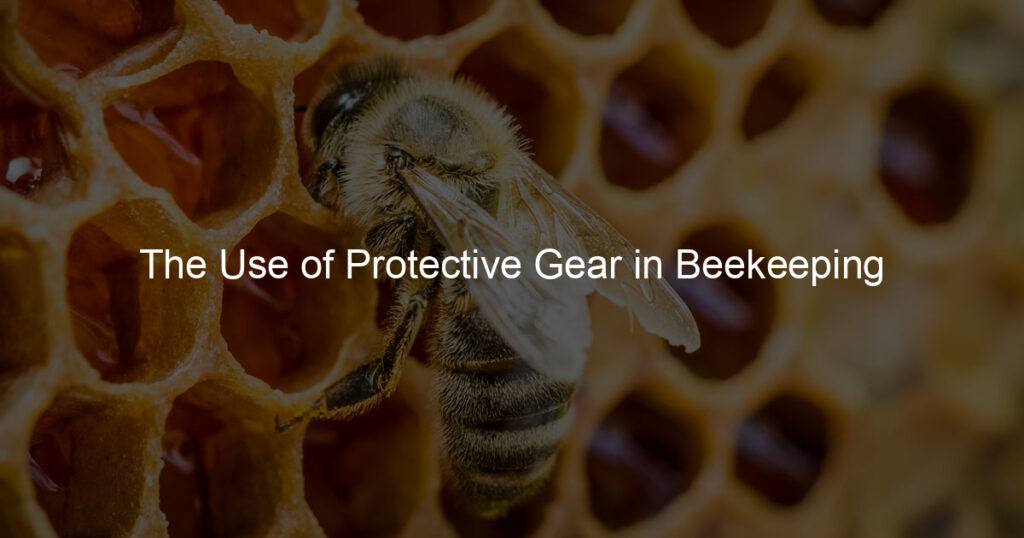Being a beekeeper is an incredibly rewarding experience. Not only are you responsible for caring for and maintaining honeybee colonies, but you can also use what you learn to support your local environment and even produce your own sustainable, locally-sourced honey!
Unfortunately, it’s no secret that working with bees comes with its risks — bee stings being chief among them. That’s why it’s important to take all necessary precautions when keeping bees and make sure that you’re properly protected while carrying out the task of tending to these fascinating creatures. To prevent potential injury or harm from occurring on the job, protective gear is essential when handling bees – so let’s explore some options in terms of clothing and other safety measures one should consider taking as a beekeeper!
Which is the protective gear of a honey bee?
Honeybees have evolved a range of protective gear to help them survive in the wild. Primarily, they rely on their exoskeletons, which are outer covering layers protecting their internal organs and systems. But they also have additional layers of protection that include armor-like plates and sensory structures such as antennae.
Bees also have special mouthparts that allow them to drink nectar and collect pollen from flowers, while still protecting them from potential predators. To further defend themselves, they produce wax and propolis, which work as natural barriers against smaller predators. All of this unique protective gear has enabled the honey bee to not only survive in its environment but thrive in it too!
What should I wear to protect myself from bees?
When it comes to protecting yourself from bees, wearing the right clothing is key. To keep bees away, opt for long-sleeved shirts and pants made of lightweight fabric like cotton or linen. Avoid bright colors and patterns that may attract them and opt for darker colors instead. Additionally, wear a wide-brimmed hat and tuck your pant legs into your socks for extra protection.
Be sure to also find out what type of bee you may encounter in the area; a beekeeper can offer valuable information about this. With the proper precautions, you can stay safe around bees so you don’t have to worry about getting stung!
Why we should consider the proper equipment and clothing in apiculture?
Beekeeping is an enjoyable and rewarding hobby, but it is important to remember that safety should come first. To ensure the safety of both beekeepers and bees, it is critical to consider proper equipment and clothing.
Suitable hive tools should be used to manipulate hives while protective clothing such as a hat, veil, gloves, and boots can dramatically reduce the risk of stings when examining a colony. Furthermore, dressing in light-colored clothes with smooth fabric can also discourage bees from attaching themselves to a beekeeper.
Taking appropriate precautions by investing in the correct gear for apiculture could make all the difference between a successful experience and one filled with pain.
What is the most important piece of equipment should a beekeeper have and why?
Beekeeping is an enjoyable and rewarding hobby that can provide plenty of fresh honey and beeswax. One of the most important pieces of equipment should a beekeeper have is a bee suit or protective clothing.
This includes a veil, gloves, and specially designed clothing to cover the body. It provides crucial protection from stings while allowing the beekeeper to carefully inspect and tend to the hives without unnecessarily agitating the bees.
A bee suit also helps by filtering out pheromones that may disrupt the hive’s operations as well as providing some measure of cleanliness for both sides – human and bee. In any case, ensuring safety should be paramount on any beekeeper’s list of requirements.
What defines beekeeping equipment?
Beekeeping equipment includes a variety of items necessary to maintain and monitor bee colonies. Most essential is the protective bee suit that ensures the safety of the beekeeper while they work with their hives.
Other tools such as hive tools, smokers, and frames are also important because they help manage the bees’ environment and assist with harvesting honey. Lastly, feeders allow beekeepers to give extra nourishment to their colonies during times when food can be scarce.
Without these key items, it would be impossible for an individual to keep bees safely and successfully.
Bringing it Home: The Use of Protective Gear in Beekeeping
Beekeepers have the choice of using protective gear or not when they work with their hives. If you decide to go without protective gear, be sure that you are well-educated and confident in your beekeeping abilities.
The use of specialized equipment and clothing can give beekeepers a much safer experience, as it decreases their chances of being stung and protects them from any potential external hazards. Ultimately, the decision on if and how to use protective gear varies from individual to individual, but the key takeaway is that no matter what method of protection you choose, safety should always be at the forefront.
Taking these extra steps in protecting yourself against any potential harm can help ensure that your beekeeping journey will remain both successful and enjoyable for years to come.








